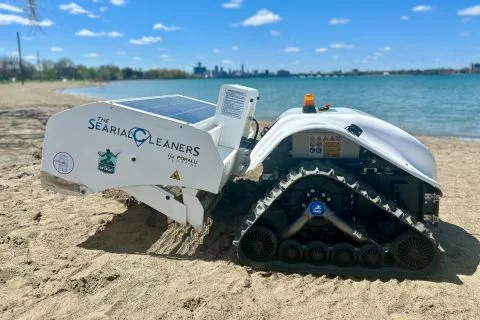The Clorox Co. and Meijer helped fund the $150,000 project, which not only covers the costs for the BeBot used on Belle Isle and maintenance but also community-engagement events.
Roughly 5 million people frequent Belle Isle every year. In 2023, nearly 9,000 pounds of trash was collected from the island. And it is estimated that 22 million pounds of plastic pollution can be found in the Great Lakes every year.
While various organizations host clean-up events to remove trash, BeBot will be used to remove large and small pieces of plastic like bottles, food wrappers, cigarette butts, and broken-down plastic particles that are often buried below the surface of the sand.
“Even though we have this amazing technology that can dredge into the sand and operate it at very fast speeds with picking up litter, I think that the human element is still very important and the communal element is still very important,” said Konner Petz, mobility strategist for the City of Detroit.
“It’s really important from a community standpoint to actually have (volunteers) pick up and come to these events alongside BeBot rather than one or the other,” he said.
Other Michigan robots
Belle Isle’s BeBot is not the only beach-cleaning robot used in the state. In 2022, Meijer donated $1 million to the Council of the Great Lakes Region Foundation to deploy BeBot and PixieDrone, a drone that collects trash from the surface of the water, on beaches and marinas along the Great Lakes.
In addition to Detroit, BeBots have been dispatched to beaches around Petoskey, Muskegon and Grand Traverse Bay. Last year, four BeBots ran in Michigan, Wisconsin and Ohio, collecting about 50,000 pieces of trash, according to the Great Lakes council.




